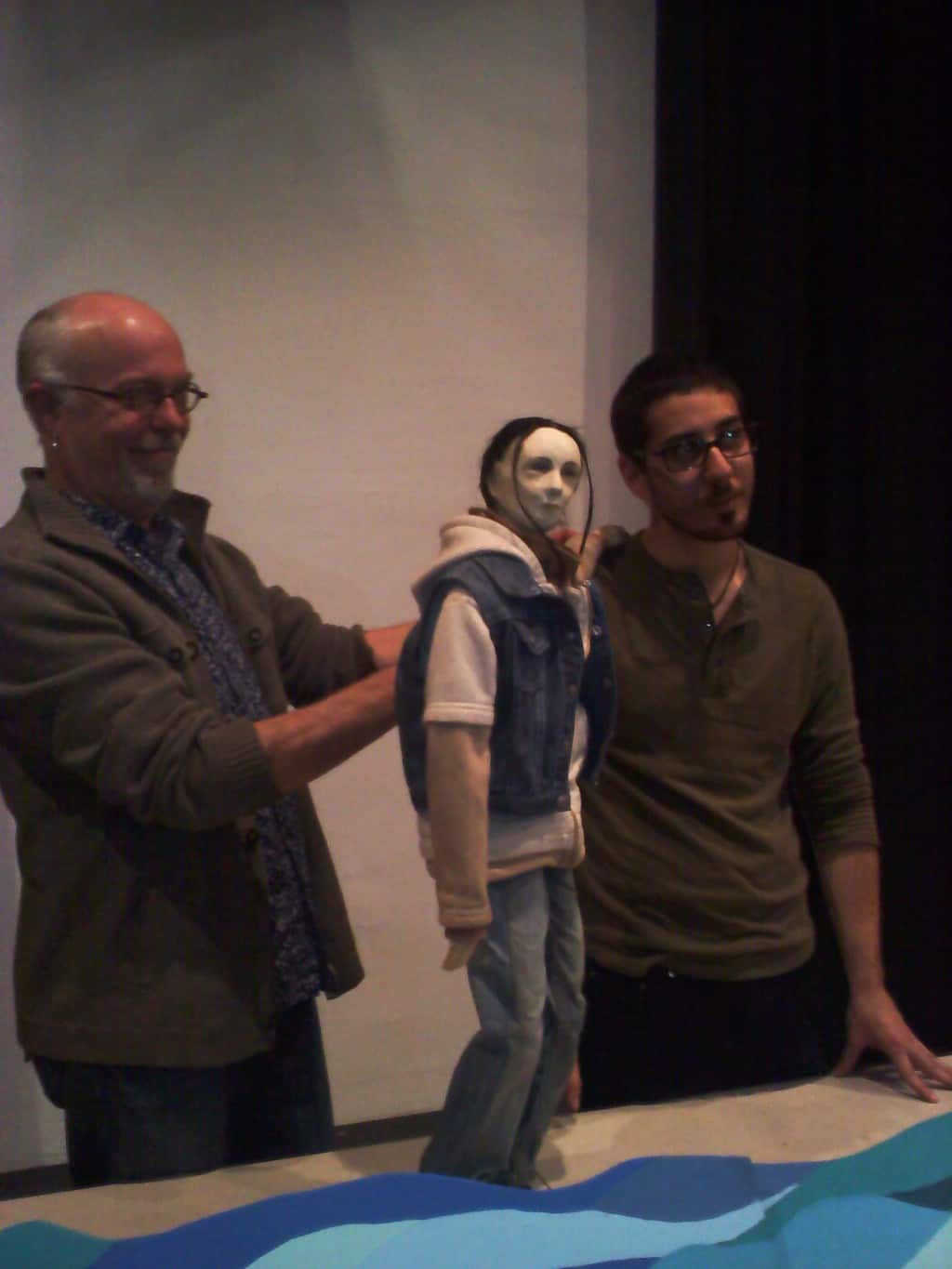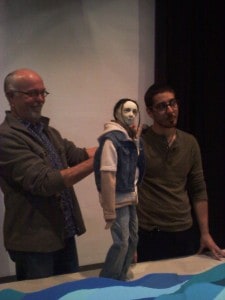

What might sound like an invitation to dinner is a unique theater piece asking us to consider hunger. What makes it great theater are the blue green waves, the shadow puppets, and the astonishing Delft china of a downwardly mobile life-shift. Not only are the stories being told compelling; they are presented in a provoking and imaginative fashion. Hunger is not something that just happens to famine victims in Africa. Hunger is stalking people that you see every day.
When I went to Highways performance space in Santa Monica to see “Who’s Hungry ?” I had heard about this show from a number of different sources; a press release, a food bank, a church and a homeless shelter. I had to go.
The phrase “food insecure” is the current jargon used to describe those who suffer hunger. Having to choose between food and rent, or food and medicine, there are millions in the Los Angeles area who struggle daily to eat. Is this entertainment? The best kind, the kind that makes you think and feel and maybe even change things.
Produced and written by Dan Froot (who originated “Who’s Hungry” in West Hollywood five years ago) the piece was created by interviewing five Santa Monica residents with food security issues, and then transcribed into oral histories. Froot, along with Puppeteer Dan Hurlin and composer Amy Denio then adapted selections for presentation.
The cast, Sheetal Gandhi, Rachel Lincoln, Daruis Mannino and Zachariah Tolchinsky did a tremendous job of bringing these small slices of stories into full realization.
Telling the truths about how people find themselves unexpectedly or unavoidably homeless and/or hungry requires a warm creativity to get us past the bias. As one narrative told of a woman who shifted from driving a Range Rover to sleeping in a box, there was no obvious villain of addiction or irresponsibility. The long dining table that serves as the set was decorated and then cleared of all the accessories of her life sculpted in a Blue Delft china pattern. Her ventures in insurance and software all sounded like plausible business. Her divorce sounded like anyone’s heartbreak. To follow her into destitution invited the audience to realize that anyone is a candidate for poverty and hunger.
While each tale had a unique presentation, the tall puppet (pictured above) that narrated the story of a grandmother with a heroin habit on her way to the bus for rehab was a remarkable moment. Not one puppeteer, but the whole cast was involved in supporting her, creating her speech, helping her walk – an ideal metaphor of the support it takes to get help.
While this is the last weekend the show will be at Highways, Froot spoke at a Q & A after the performance about doing the work in West Hollywood and Santa Monica, and said that he is hoping to bring the next phase of the project to Culver City.
There’s never a bad time to get involved, to get creative and to be the change you want to see in the world.


Be the first to comment